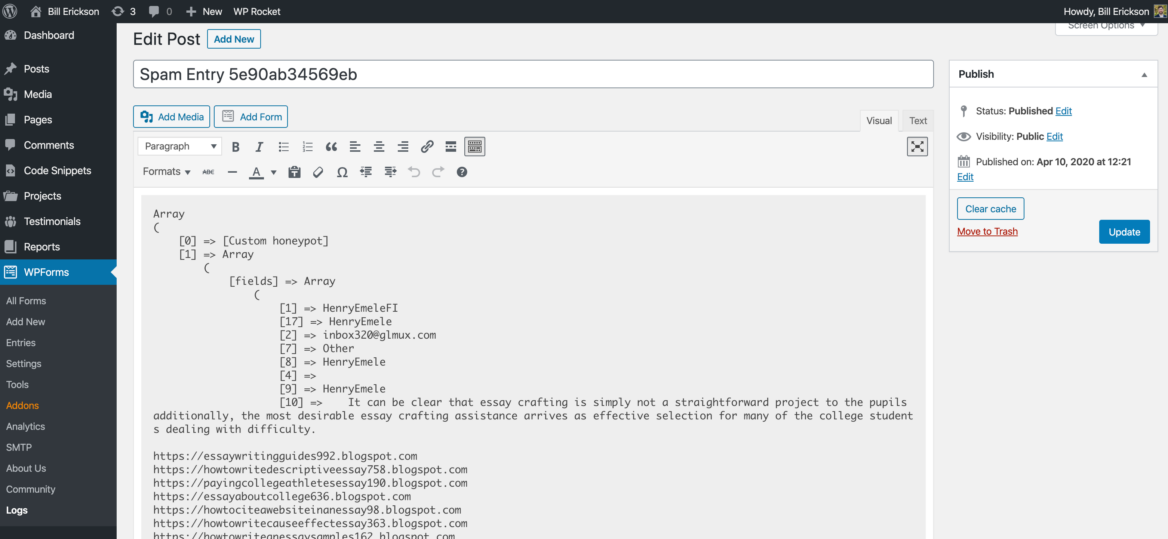
A custom honeypot is a simple and effective way to eliminate spam. If a hidden field in your form is filled in, you can be fairly confident the submission is spam.
WPForms does include a built-in honeypot, but now that the plugin is used on millions of sites, most spam bots have been updated to identify and skip the WPForms field with a name of hp.
Your custom honeypot is different. It’s unique to your form and looks like any other field to a bot. I have pretty much eliminated spam on my contact form with a custom honeypot.
First, come up with a unique CSS class name you’ll use to identify your honeypot field. Make it something unique to your site (ie: not honeypot). If your class is my-fancy-field, add this to your theme’s stylesheet to hide that field.
.wpforms-container .my-fancy-field {
display: none;
}Create a field in your form and add your custom class to it.
Add the following code to your theme’s functions.php file or a Core Functionality plugin. If this field is ever filled in, the submission will be marked as spam and have a honeypot message of “[Custom honeypot]”.
Make sure you update the $honeypot_class variable at the top to use your custom class name.
/**
* WPForms Custom Honeypot
*
* @author Bill Erickson
* @link http://www.billerickson.net/eliminate-spam-with-a-custom-honeypot/
*
* @param string $honeypot, empty if not spam, honeypot text is used in WPForms Log
* @param array $fields
* @param array $entry
* @param array $form_data
*/
function be_wpforms_custom_honeypot( $honeypot, $fields, $entry, $form_data ) {
$honeypot_class = 'my-fancy-field';
$honey_field = false;
foreach( $form_data['fields'] as $form_field ) {
if( false !== strpos( $form_field['css'], $honeypot_class ) ) {
$honey_field = absint( $form_field['id'] );
}
}
if( !empty( $entry['fields'][$honey_field] ) ) {
$honeypot = 'Custom honeypot';
}
return $honeypot;
}
add_filter( 'wpforms_process_honeypot', 'be_wpforms_custom_honeypot', 10, 4 );Logging
You can also enable logging so you can see if the honeypot is working. Every time a spam entry is submitted, this will create a post in the wpforms_log post type with the honeypot message and the full submission.
I recommend only logging this data temporarily because you don’t want to fill up your database with a bunch of unimportant spam messages.
First, update the wpforms_logging option to log spam:
/**
* Enable logging of spam
*
*/
add_action( 'init', function() {
$debug = get_option( 'wpforms_logging' );
if( empty( $debug ) || ! in_array( 'spam', $debug ) )
update_option( 'wpforms_logging', [ 'spam' ] );
});Use this code to make the WPForms Log post type visible. You can then access it in WPForms > Logs.
/**
* Make log visible
*
*/
add_filter( 'wpforms_log_cpt', function( $args ) {
$args['show_ui'] = true;
unset( $args['capability_type'] );
return $args;
});The post Eliminate spam with a custom honeypot appeared first on Bill Erickson.

